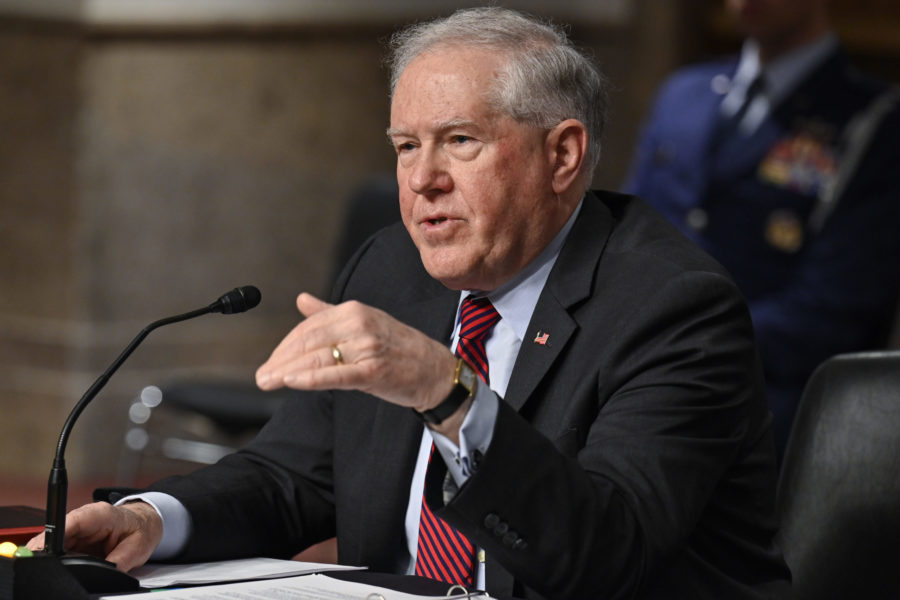With a little more than a week to go before the continuing resolution funding the federal government expires, lawmakers in Congress still have yet to reach an agreement on spending—and Air Force Secretary Frank Kendall is warning that dozens of programs and projects could be affected if no long-term agreement is reached, according to a letter obtained by Air & Space Forces Magazine.
While lawmakers continue to negotiate a spending bill, they have made progress on the National Defense Authorization Act, the annual defense policy bill—the House passed a compromise version of the NDAA on Dec. 8, setting it up for passage in the Senate. The NDAA can authorize maximum spending limits, but it cannot appropriate funds.
All told, a yearlong CR could cost the Department of the Air Force up to $12 billion in buying power, Kendall wrote in the letter to members of Congress.
Even a short-term continuing resolution “threatens DAF readiness, delays military construction projects, reduces aircraft availability and maintenance, hinders the Space Force, and curbs modernization efforts,” Kendall added.
Specifically, Kendall wrote that as long as the government continues to operate under a CR, 61 new programs and 28 military construction projects are unable to start, impacting more than $6 billion worth of efforts.
Those military construction projects include facilities for some of the Air Force’s most important modernization efforts, including the KC-46 tanker, the new B-21 bomber, and the LGM-35 Sentinel intercontinental ballistic missile.
Facilities for the European Deterrence Initiative, aimed at combatting Russian aggression, are also affected, as are funds for “Indo-Pacific presence activities,” Kendall wrote. Flight hours and weapons system sustainment are cut, decreasing aircraft fleets’ mission capable rates.
Transfers into the Space Force are delayed, and eight new Space Deltas cannot be activated. Pay raises and increases to allowances cannot go into effect. And production of the Next Generation Overhead Persistent Infrared satellite is delayed.
The number of new starts and military construction projects affected by the CR exceed what the department faced last year, when 16 new programs and seven construction projects were affected.
Congress didn’t pass a full budget for 2022 until mid-March, nearly six months into the fiscal year. For fiscal 2023, the legislature passed a CR just before the Sept. 30 deadline, funding the government until Dec. 16. Now, with just a few days to go until that expires, Pentagon officials are ramping up pressure on lawmakers to act—Defense Secretary Lloyd J. Austin III sent a letter similar to Kendall’s last week, saying a CR costs the DOD at least $3 billion every month.
Yet Republicans and Democrats remain at odds and seemingly unable to reach an agreement on a so-called “omnibus” spending bill. Indeed, House Speaker Nancy Pelosi (D-Calif.) and other Democratic leaders threatened Dec. 8 to put forward a yearlong CR—exactly the kind of scenario Austin, Kendall, and other officials have warned would deeply damage the military.
“We may just have to go to a CR, which would be most unfortunate, but we have to weigh it against how unfortunate it would be if they cannibalized the domestic budget at the expense of the defense budget,” Pelosi reportedly said. “We need them both.”
CRs have become standard for Congress over the past quarter of a century, with one getting passed every year since 1997. Yearlong CRs, on the other hand, are rare but have occurred before—2007, 2011, and 2013 all saw yearlong CRs for at least part of the federal government.
